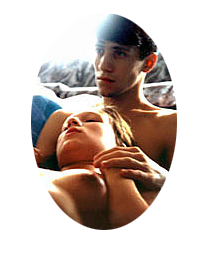The first recorded modern waterbirth took place in a village in France in 1805 and detailed in a French medical society journal reporting, through the suggestion of her doctor, a woman who had labored for 48 hours received temporary relief, from her non-progressing labor in a warm bath. After a short time in the tub, the baby came out so quickly that she didnít have time to leave the water to birth her child.
Subsequent reports of water birth were scattered until 1960s when documentation of water births began in the Soviet Union.
The '60s, the decade when the head met the heart and redefined a balanced individual to mean, one who operates with heart and mind in unison.
Thus begins the work of Igor Charcovsky, a self-educated Russian scientist and healer who researched animals laboring and birthing in water. His work involved observation of babies in water, including his daughter Veta, who was born prematurely in 1963, weighing 2.62 pounds. Charcovsky placed his daughter in a water environment, a shallow pan of warm water for most of the first two years of her life. Igor rationalized the benefit of his daughter not having to combat gravity while in the water and thus conserve the energy to vital organs to survive as opposed to an incubator in gravity in a hospital.
At the same time Igorís work was being done, Frederick Leboyer was introducing the concept of a warm bath for the baby after the birth, in a hospital located in a small suburb of Les Lilas. It certainly introduced a less violent approach to coming into the world, yet the drawback was taking the baby away from the mother at birth. Now in some hospitals or birth centers, there is a permanent tub installed for the women to optionally labor or birth in.
Midwives at hospitals observed a difference in the babies born in the water as opposed to the air. "We can tell which babies have been born in water. They are like little grown-ups. You know they understand you. Itís very special to be with them."
In the early '70s, Dr. Leboyer had become a friend of Dr. Michel Odent, formerly head of surgery at a hospital in Pithiviers, France. Odent was the first physician to recognize the beneficial effects of warm water for labor and birth. Dr. Odent coined the term: "fetal ejection response," where women suddenly have an urge to leave the water. As they enter the cooler temperature and the change triggers an adrenaline release as the baby emerges out of the mother very quickly. Similar to the "milk ejection reflex," when a mother hears her baby cry, or sees the baby across the room or even thinks about the baby and milk slips out of her nipples ready to feed the baby. If we can learn to become more respectful and aware of the miracle of our biology, the whole process of pregnancy, labor and birth might be that much easier.
In the early '70s the practice of lay midwifery reemerged in the US, mostly in northern California and Boston area. By 1981 a small group of midwives heard about Odent and Charcovskyís work.. The practice of "Rebirthing," a technique developed in the '70s as well for tapping into repressed emotions and memories, including memories of oneís birth. Rebirthing couples began to birth their babies in water. Some were attended by medical caregivers and others werenít.
Previous | Next

